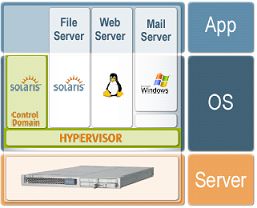Introduction
Solaris Containers are part of Sun Microsystems’ comprehensive offering of virtualization technologies. These containers provide isolation between software applications or services using flexible, software-defined boundaries. Applications can be managed independently of each other, even while running in the same instance of the Solaris Operating System (Solaris OS). Solaris Containers create an execution environment within a single instance of the Solaris OS and provide:
- Full resource containment and control for more predictable service levels
- Software fault isolation to minimize fault propagation and unplanned downtime
- Security isolation to prevent unauthorized access as well as unintentional intrusions
In a nutshell, a Solaris container is an implementation of operating system-level virtualization technology, characterized by:
- Resource and namespace isolation
- A Scalable architecture
- The use of a single operating system, which eliminates redundant administration – the guest operating system is the same as the host operating system, but appears isolated!
- Hardware independence

Figure 1 : OS Virtualization technology
This is in stark contrast to VMware’s Para-virtualization technique, where:
- a variety of operating systems can be mounted on the guests, and each guest functions as an independent kernel
- the modified guest operating systems use a special API
- hardware virtualization is performed in addition to OS virtualization

Figure 2 : The Para-virtualization technology
